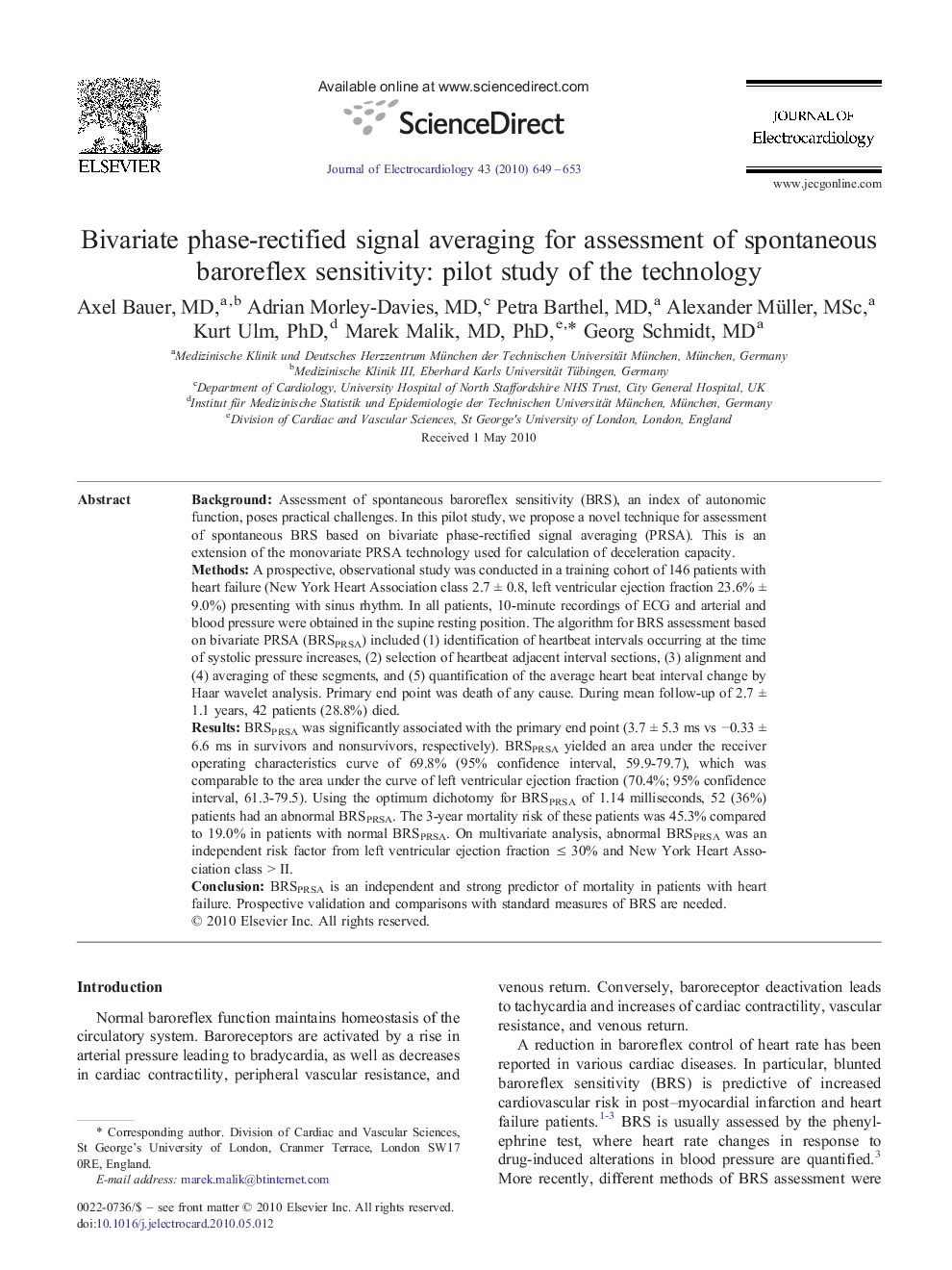| کد مقاله | کد نشریه | سال انتشار | مقاله انگلیسی | نسخه تمام متن |
|---|---|---|---|---|
| 2968786 | 1178887 | 2010 | 5 صفحه PDF | دانلود رایگان |

BackgroundAssessment of spontaneous baroreflex sensitivity (BRS), an index of autonomic function, poses practical challenges. In this pilot study, we propose a novel technique for assessment of spontaneous BRS based on bivariate phase-rectified signal averaging (PRSA). This is an extension of the monovariate PRSA technology used for calculation of deceleration capacity.MethodsA prospective, observational study was conducted in a training cohort of 146 patients with heart failure (New York Heart Association class 2.7 ± 0.8, left ventricular ejection fraction 23.6% ± 9.0%) presenting with sinus rhythm. In all patients, 10-minute recordings of ECG and arterial and blood pressure were obtained in the supine resting position. The algorithm for BRS assessment based on bivariate PRSA (BRSPRSA) included (1) identification of heartbeat intervals occurring at the time of systolic pressure increases, (2) selection of heartbeat adjacent interval sections, (3) alignment and (4) averaging of these segments, and (5) quantification of the average heart beat interval change by Haar wavelet analysis. Primary end point was death of any cause. During mean follow-up of 2.7 ± 1.1 years, 42 patients (28.8%) died.ResultsBRSPRSA was significantly associated with the primary end point (3.7 ± 5.3 ms vs −0.33 ± 6.6 ms in survivors and nonsurvivors, respectively). BRSPRSA yielded an area under the receiver operating characteristics curve of 69.8% (95% confidence interval, 59.9-79.7), which was comparable to the area under the curve of left ventricular ejection fraction (70.4%; 95% confidence interval, 61.3-79.5). Using the optimum dichotomy for BRSPRSA of 1.14 milliseconds, 52 (36%) patients had an abnormal BRSPRSA. The 3-year mortality risk of these patients was 45.3% compared to 19.0% in patients with normal BRSPRSA. On multivariate analysis, abnormal BRSPRSA was an independent risk factor from left ventricular ejection fraction ≤ 30% and New York Heart Association class > II.ConclusionBRSPRSA is an independent and strong predictor of mortality in patients with heart failure. Prospective validation and comparisons with standard measures of BRS are needed.
Journal: Journal of Electrocardiology - Volume 43, Issue 6, November–December 2010, Pages 649–653